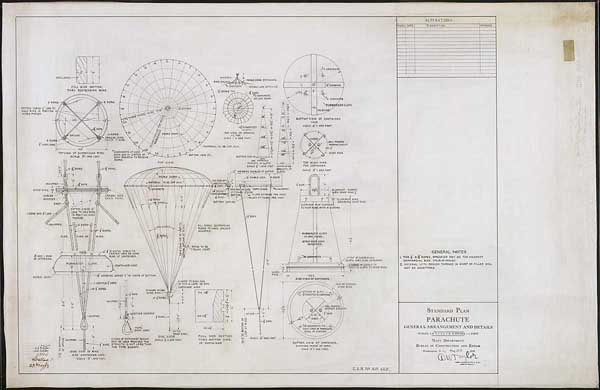
"Standard Plan Parachute General Arrangement
and Details"
By S.D. Kehler for the Bureau of Construction and Repair, U.S. Navy, May
22, 1918
Ink on tracing linen
National Archives and Records Administration, Records of the Bureau
of Aeronautics
Science and Technology: "Standard Plan Parachute
General Arrangement and Details"
The advent of aerial warfare during World War I
brought with it concerns about protecting the lives of those who flew
airplanes, balloons, and dirigibles. One possible protective measure was
the parachute. Unfortunately, early parachutes were unreliable, bulky,
and weighed up to 40 pounds. They were also thought to diminish a pilot's
desire to fight, and several countries did not issue them because of fears
that pilots might abandon their planes in combat. Parachutes were provided
for balloonists and other lighter-than-air craft as early as 1915. After
the United States entered the war in 1917, it followed Britain's lead
and did not give its pilots parachutes. By 1918, however, the U.S. Army
Air Corps reconsidered this stance because it wanted to preserve the airmen
it had trained. The ripcords of early parachutes, like this one designed
for the U.S. Navy, were attached to the aircraft; the chute would open
when the attached line grew taut. The first successful test of a "free
fall" parachute operated by the individual abandoning an aircraft was
not made until 1919.